
Starting June 1st, 2023 Our warehouse fee will be $0.65/cubic foot per month
In effort to lower the warehouse storage fee during inflation, we have went narrow aisle racking.This construction took us four months but the project is finally completed. With narrow aisle racking, we are able to drop storage by 24%.We as partners will go through this inflation together.
06/13/2024
In the dynamic world of logistics and supply chain management, the term "Freight All Kinds" (FAK) plays a pivotal role. As businesses increasingly seek efficient and cost-effective shipping solutions, understanding FAK becomes essential. This comprehensive approach to freight classification streamlines the shipping process by allowing diverse goods to be transported under a single freight rate, irrespective of their individual classes. By leveraging FAK, companies can simplify logistics, reduce costs, and enhance operational efficiency, making it a critical concept for modern-day freight management.
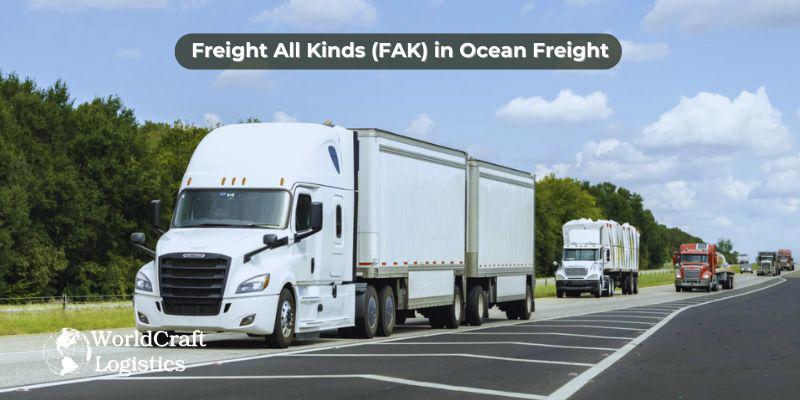
FAK (Freight All Kinds) in international ocean shipping is a pricing model where a uniform freight rate is applied to all types of cargo within a container, regardless of the specific product.
Adopting FAK simplifies the process for freight forwarders when providing price quotes, as it allows them to offer standardized rates for a wide range of goods. Additionally, it streamlines booking space with carriers, enabling the consolidation of different shipments into a single container at the same rate.
For importers and exporters, FAK facilitates obtaining freight quotes from forwarders since there's no need for specialized pricing for each type of item.
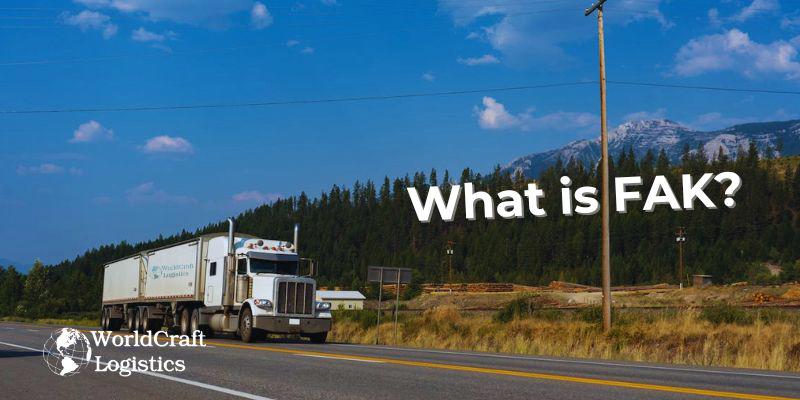
The Solution of FAK Averaging:
Imagine you're a shipper needing to transport various classified commodities on the same skid.
The FAK solution consolidates multiple freight classes into a single class, simplifying the shipping process by eliminating the need to reclassify items. By averaging the characteristics of various commodities, it ensures a fairer shipping rate for both the shipper and the carrier.
Read more to learn more useful knowledge from Worldcraft Logistics:
👉 Standard Shipping: Benefits, price ranges and delivery times
👉 What is the meaning of Long-Haul Transportation? Guide for ecommerce
👉 The best guide to Overnight Shipping & everything you need to know
FAK (Freight All Kinds) rate is a standardized freight pricing model used in shipping, where a single rate is applied to a container regardless of the types of goods it contains. This means that different types of cargo, whether they are heavy machinery, textiles, or electronics, are all charged the same rate when shipped together in one container.
The FAK rate simplifies the logistics and pricing process by:
Streamlining Quotes: It allows freight forwarders to offer consistent rates for a variety of goods without needing to provide item-specific quotes.
Simplifying Bookings: It enables easier booking of container space since different types of shipments can be combined into a single container at the same rate.
Facilitating Import/Export: It makes it easier for importers and exporters to receive freight quotes, as they do not need separate quotes for each type of item being shipped.
Overall, the FAK rate is designed to make shipping more efficient and cost-effective by reducing complexity in the pricing structure.
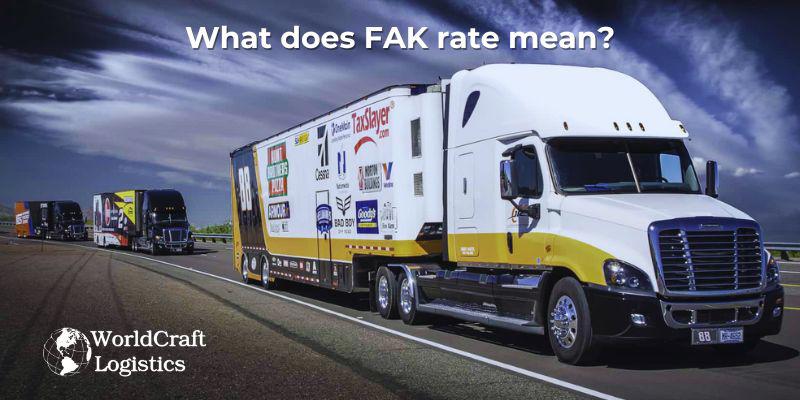
The FAK rate system simplifies shipping by offering a uniform rate for containers, regardless of the cargo type. Unlike traditional freight pricing methods, which consider the type of goods, their density, handling requirements, and stowability, FAK rates streamline the process, making it easier for shippers.
Carriers establish a single FAK rate for a specific trade route or region, applicable to all types of cargo. For example, a carrier might set a FAK rate of $1,500 for a 40-foot container on the Asia to US West Coast route.
The FAK rate covers basic transportation costs and all applicable accessorial charges, such as Bunker Adjustment Factor (BAF), Currency Adjustment Factor (CAF), and Terminal Handling Charges (THC). Shippers pay nothing beyond the stated FAK price. However, certain additional fees may apply based on specific shipping requirements or conditions. For instance, hazardous materials, high-value goods, or items needing special handling might not qualify for FAK rates or could incur additional surcharges not covered under the basic FAK rate.
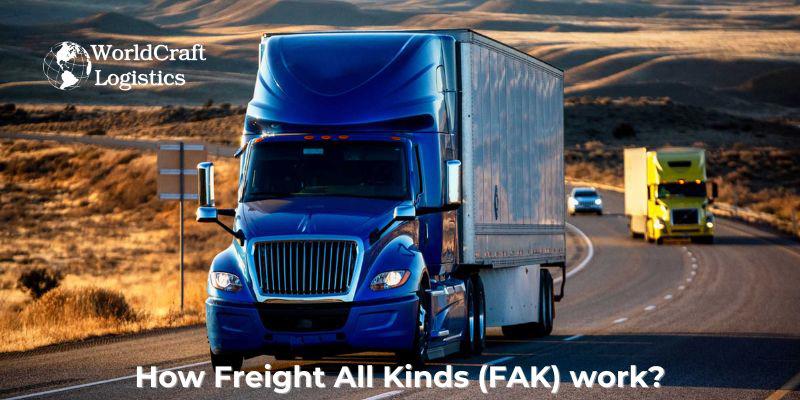
Shippers are billed a single, all-inclusive FAK rate for each container, eliminating the need to calculate additional fees for different cargo types within the same container.
The primary advantage of the FAK rate system is its simplicity and predictability, allowing shippers to budget and plan shipping costs more efficiently. It reduces administrative overhead by minimizing the need for detailed cargo declarations and negotiations for each type of good within a container.
However, it's important to note that FAK rates do not apply universally to all cargo types. Specific exceptions include:
Hazardous goods requiring special handling or regulatory compliance.
High-value cargo exceeding a certain value threshold (e.g., $500,000 per container) due to increased risk and liability.
High-risk or sensitive cargoes, such as government or military cargo, which may have additional security or handling requirements.
Cargoes needing specialized containers, like ISO tanks or flexitanks, and those that are out of gauge.
Refrigerated (reefer) cargo, which requires unique handling and transportation needs.
Disputable cargo, including charity or relief goods, which may have different pricing considerations or require special arrangements.
In summary, while FAK rates simplify the freight shipping process for a wide range of goods, understanding the specific exclusions, pricing structure, and applicability of these rates is crucial for optimizing shipping strategies and costs. It also underscores the importance of maintaining strong relationships with shipping lines and being adaptable to market changes to secure the best possible terms for freight transportation.
FAK offers numerous benefits, including:
By applying a single rate for an entire container, FAK simplifies the pricing process for importers, exporters, freight forwarders, and carriers. This eliminates the need for complex calculations associated with different cargo types.
FAK removes the hassle of categorizing and pricing individual commodities. Importers and exporters can bypass the time-consuming task of negotiating separate rates for each type of cargo, streamlining their shipping operations.
FAK provides the flexibility to mix different types of cargo within the same container without affecting the shipping cost. This allows shippers to use available space more efficiently.
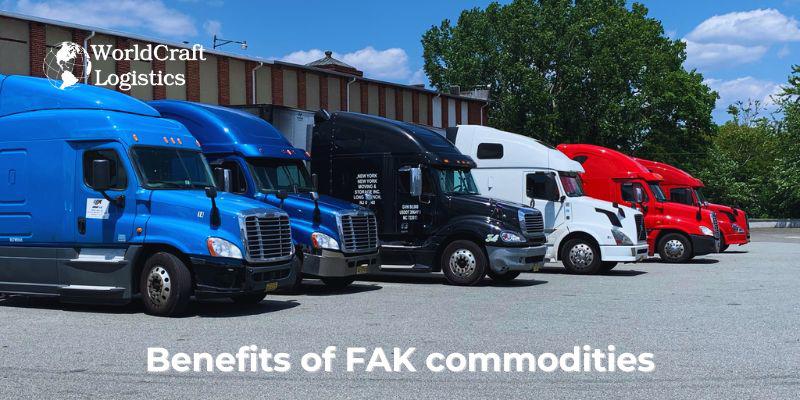
FAK can result in cost savings for importers and exporters who ship diverse goods. By using a single rate for the entire container, shippers can achieve better economies of scale and lower overall shipping costs.
FAK offers greater predictability in budgeting for shipping costs, as costs are not tied to specific items. This makes it easier for importers and exporters to plan their logistics financials.
FAK saves time for both shippers and carriers by simplifying the pricing and documentation processes. This allows them to focus more on other aspects of their business and shipping operations.
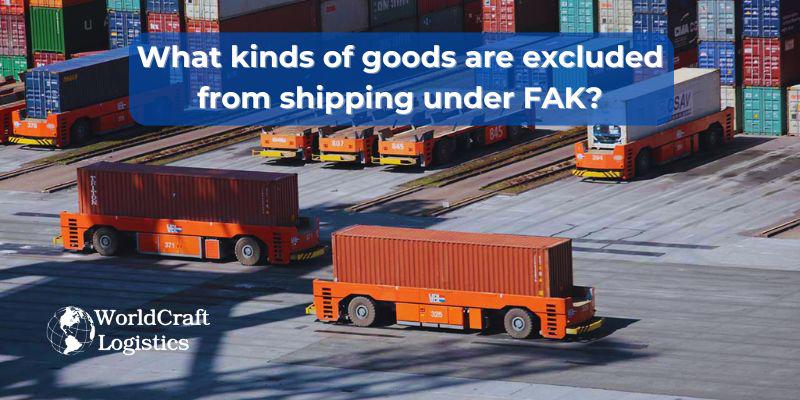
Items that typically cannot be shipped under Freight All Kinds (FAK) rates include:
Hazardous Materials: Goods classified as hazardous, requiring special handling and compliance with specific regulations, are generally excluded from FAK rates.
High-Value Cargo: Items exceeding a certain value threshold, such as $500,000 per container, due to the increased risk and liability associated with their transport.
Sensitive or High-Risk Cargo: Cargoes requiring additional security or handling, such as government or military shipments.
Specialized Containers: Goods needing specialized containers, such as ISO tanks or flexitanks, and items that are out of gauge (oversized).
Refrigerated Cargo: Perishable goods requiring refrigeration (reefer cargo), due to their unique handling and transportation needs.
Disputable Cargo: Items such as charity or relief goods, which may have different pricing considerations or require special arrangements.
These exceptions are due to the specific handling, regulatory compliance, or additional risks associated with these types of cargo.
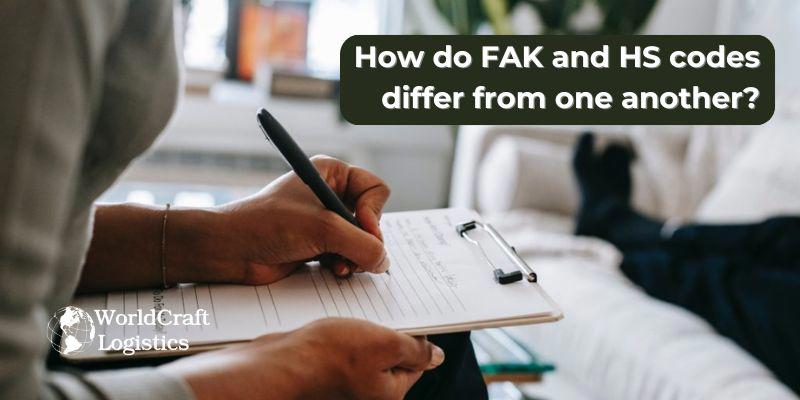
FAK allows for flat freight pricing across different types of goods. However, it does not replace the need to provide accurate HS codes for each of your products. HS codes are used to determine customs duties and fees, which vary by product.
In other words, even when using FAK rates for freight, you’ll still need the correct HS code for customs rates. Your forwarder can help you determine the appropriate HS codes for your goods.
You might opt for an FAK agreement for its cost efficiency, simplified logistics, streamlined administration, predictability in budgeting, and time-saving benefits. FAK offers flat freight pricing across different goods, simplifies shipping processes, reduces administrative burden, provides predictable costs, and saves time for both shippers and carriers.
To obtain an FAK (Freight All Kinds) agreement, you typically need to negotiate directly with a carrier. Start by contacting carriers that offer FAK programs and inquire about their specific requirements and terms for establishing an agreement. Be prepared to provide details about your shipping needs, such as the volume and diversity of your cargo, to facilitate the negotiation process. Additionally, working with a freight forwarder or logistics provider experienced in FAK agreements can help streamline the process and ensure you secure favorable terms.
Determining if a shipment qualifies for FAK (Freight All Kinds) status depends on various factors, including the nature of the goods, the carrier's specific FAK program, and the terms negotiated in your agreement. Typically, FAK status applies to shipments containing a mix of different types of cargo, regardless of their individual classes or characteristics. However, certain exclusions may apply, such as hazardous materials or high-value goods exceeding specified thresholds. To confirm if your shipment qualifies for FAK status, consult your carrier's FAK guidelines and terms, and work closely with your freight forwarder or logistics provider to ensure compliance with the requirements.
FAK involves consolidating multiple shipments from various shippers into a single container, allowing for a mix of different types of cargo within the same container without regard to their individual characteristics. On the other hand, FCL entails one shipper using an entire container for their shipment, typically with a large quantity of goods belonging to the same category or type.
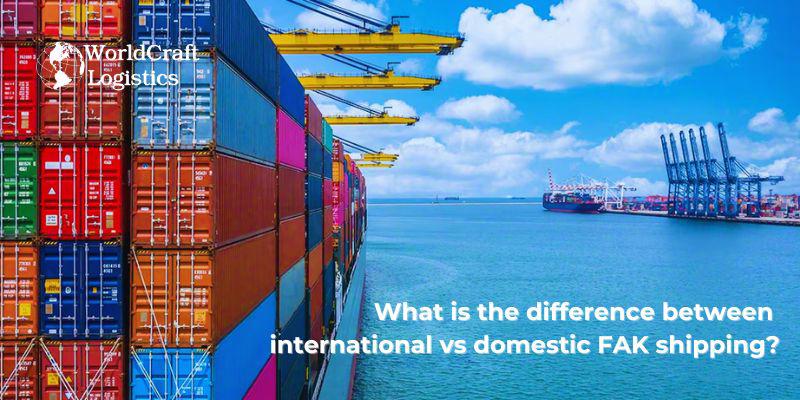
The main difference between international and domestic FAK shipping is the scope and regulations involved:
*International FAK Shipping:
Crosses international borders.
Requires compliance with customs regulations and international trade agreements.
Involves additional documentation and may necessitate assistance from experienced freight forwarders.
*Domestic FAK Shipping:
Occurs within a single country.
Subject to domestic transportation regulations.
Generally simpler in terms of regulatory requirements compared to international shipping.
*Read more: What is domestic shipping? Benefits, pricing and efficient planning
In conclusion, Freight All Kinds in ocean freight shipping offers significant advantages for both shippers and carriers. By providing simplified pricing, administrative efficiency, flexibility, cost savings, predictable budgeting, and time savings, FAK streamlines the shipping process and enhances overall logistics operations. Whether for international or domestic shipments, FAK agreements enable businesses to optimize their shipping strategies, reduce administrative overhead, and achieve greater efficiency in their supply chain management.
SEO
Digital Marketing/SEO Specialist
Simon Mang is an SEO and Digital Marketing expert at Wordcraft Logistics. With many years of experience in the field of digital marketing, he has shaped and built strategies to effectively promote Wordcraft Logistics' online presence. With a deep understanding of the logistics industry, I have shared more than 500 specialized articles on many different topics.

Education
01/05/2025

Education
02/18/2025

Education
01/01/2024

Education
08/28/2024
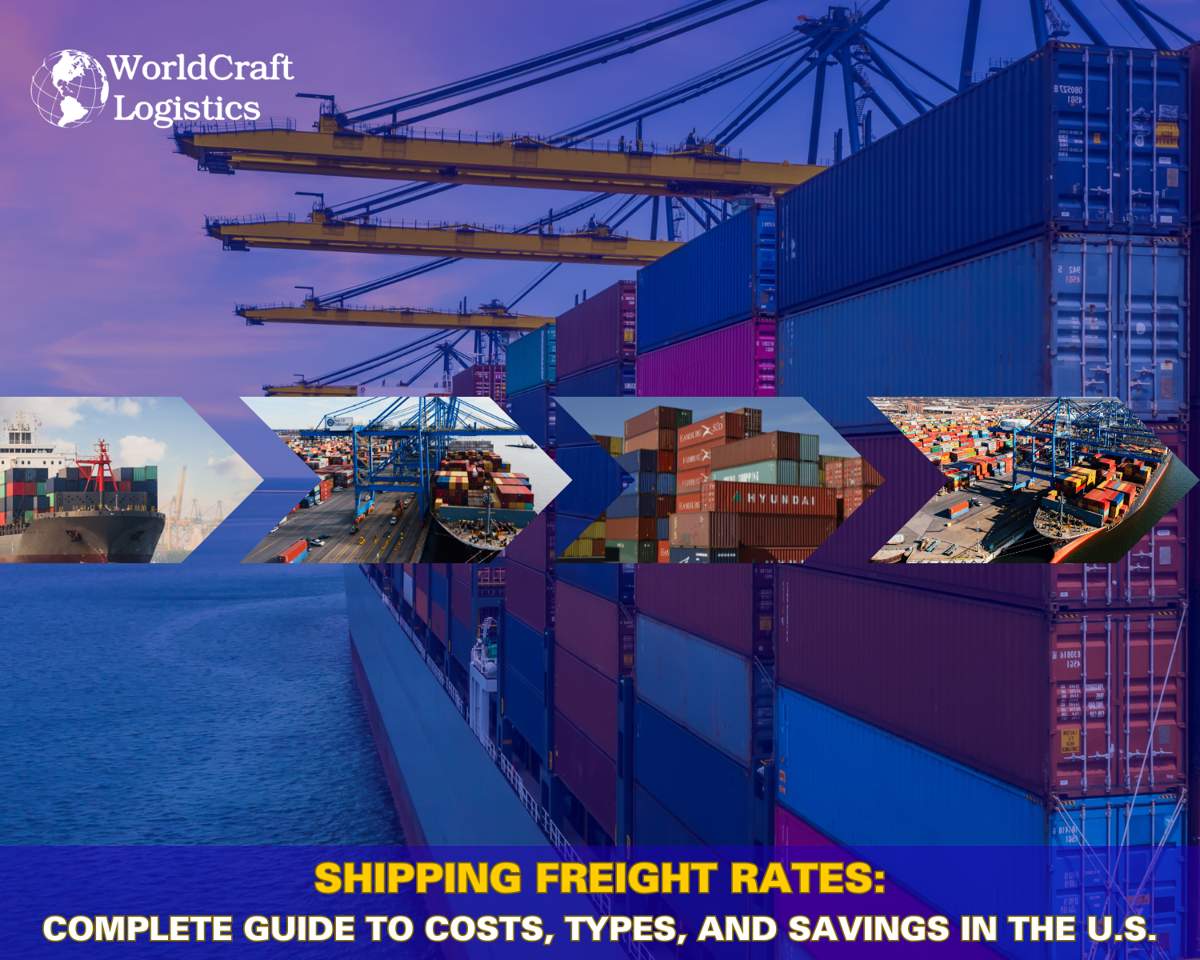
Education
09/09/2025